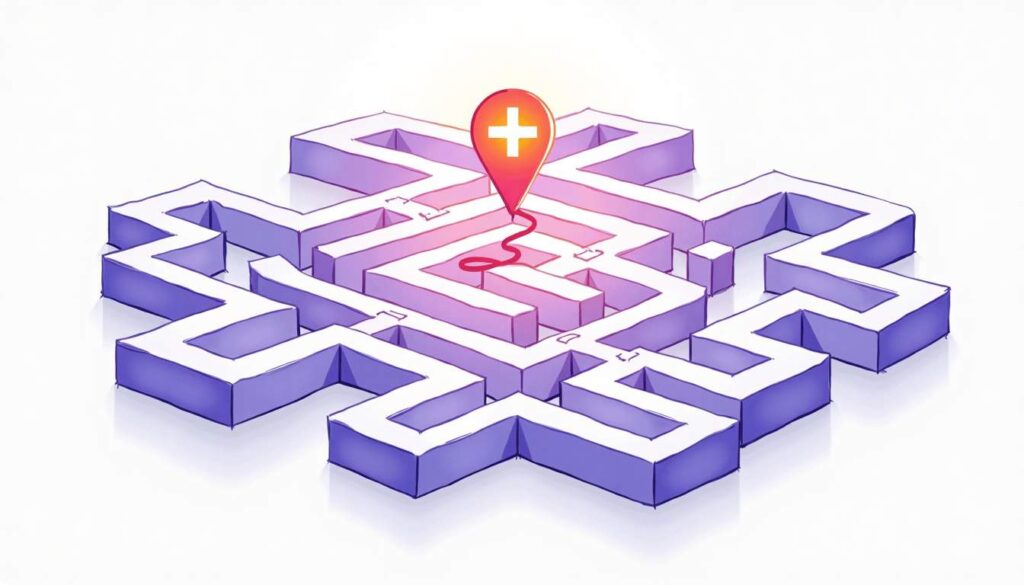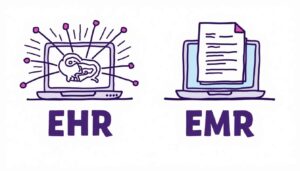Overcoming EHR Implementation Challenges: A 2025 Comprehensive Guide
29 Oct 2025 By: Vlade Legaspi
Updated

Electronic Health Records systems are meant to help with workflow efficiency, better patient care, and smarter data handling overall. Even so, plenty of organizations run into serious hurdles during EHR implementation. Things like unexpected expenses and resistance from the team tend to drag everything down. A solid strategy though lets groups overcome those problems. They can make the whole launch a success instead of some kind of red flag.
Understanding the Root Causes of EHR Implementation Challenges
You need to figure out why EHR implementation gets so tricky before you jump into the issues. It goes beyond simply putting in the software. It really means changing the way the whole organization runs.
Complexity of Healthcare Workflows
Healthcare workflows are complex. Doctors, nurses, and staff all use patient data differently. EHR systems must meet these needs smoothly. When they don’t, EHR implementation challenges like frustration and delays quickly rise.
A 2023 HIMSS survey showed 48% of clinicians said EHRs slowed tasks due to poor workflow fit. This shows how vital good design is. EHR implementation challenges grow when systems ignore real clinical needs. Different roles, like cardiologists and primary doctors, need custom tools. A flexible EHR must meet these varied needs while staying unified.
Resistance to Change
Change is tough, especially in healthcare. Many prefer paper or old systems and fear tech will add work or cause mistakes. This pushback creates EHR implementation challenges and can slow progress. Studies show 60% of failures stem from user resistance. Involving staff early helps ease fears. Training and support also build trust. When users feel skilled and heard, they accept change. A feedback loop encourages growth and makes EHR adoption smoother.
Data Migration and Interoperability Issues
Moving patient records to a new EHR is a big task. Data must be right, full, and match the new system. EHR implementation challenges grow when systems can’t share info. Interoperability gets harder with old tech or many vendors in use.
Poor data migration and weak links between systems can harm patient safety. EHR implementation challenges rise when records are missing or wrong. Mapping data from old to new systems is tricky and may cause gaps. As care shifts to value-based models, smooth data sharing becomes vital. Patients moving between doctors need full histories. Without it, tests repeat, diagnoses delay, and care suffers. Strong data plans and early focus on system links help EHRs succeed.
Planning for Successful EHR Implementation

Good planning helps beat EHR implementation challenges. Set clear goals, pick the right system, and get your team ready for change.
Define Clear Objectives and Metrics
Start by defining what the EHR system should achieve. Focus on safety, less admin work, or better data use. Clear goals shape choices and track success.
A hospital aiming to cut medication errors may choose tools like e-prescribing and decision support. Set KPIs like fewer errors or saved time per visit. Track patient satisfaction to see if the EHR helps both patients and staff. Use surveys and feedback to spot issues and improve. This keeps the EHR system aligned with your goals.
Engage Stakeholders Early and Often
Success needs support from all doctors, IT, admin, and patients. A mixed team helps guide the EHR project with input from every side. Keep everyone updated often. Listen to users’ concerns. When staff feel heard, they support the change. Host training and workshops to talk through needs. Let patients share their views to improve their care. This teamwork builds a stronger, shared system.
Choose the Right EHR System
Thing is, EHR systems come in all sorts of varieties. You need to pick a platform that really fits the size of your organization, along with its specialty and the daily workflows involved. That step matters a great deal. Pay attention to details like customization features, the user interface design, vendor support levels, and adherence to rules such as HIPAA.
Asking for demos, looking into references, and bringing end-users into the whole evaluation can stop those expensive wrong choices from happening. It matters a lot to check the scalability of the EHR system, so it keeps up as the organization expands over time. Healthcare setups keep changing, and the system you pick should handle today’s requirements while adjusting to what comes next, like adding fresh technologies or growing the services offered. Seeing to it that the vendor offers solid training and continued support plays a key role in getting the EHR adopted well, which leads to an easier shift overall and improved results for the staff along with the patients.
Addressing Common Technical Challenges

Technical issues often derail EHR projects. Anticipating and managing these challenges can keep implementation on track.
Data Migration Strategy
Data migration must be careful and complete. Start with a data audit to spot gaps or issues. Clean and standardize data to avoid EHR implementation challenges.
Test often—run pilot moves and check for errors. Involve key staff to catch vital data needs. Keep everyone informed to ease fears and build support.
Ensuring System Interoperability
Healthcare providers need EHR systems that link with labs, pharmacies, and imaging tools. This helps avoid major EHR implementation challenges.
Use HL7 and FHIR to boost data sharing. Work with vendors and IT to test connections. In some cases, this includes coordination with hardware providers such as an HDI pcb manufacturer to ensure compatibility across systems. Strong links improve care, support compliance, and help decisions.
Robust IT Infrastructure and Security
Strong hardware, networks, and security help avoid EHR implementation challenges. Slow tech annoys users, and data leaks can cause harm.
Use scalable systems and tight security like encryption and audits. Train staff on threats. Add AI tools to spot risks fast and update systems often.
Managing the Human Side of EHR Implementation

Technology is only as effective as the people using it. Addressing human factors is vital for adoption and long-term success.
Comprehensive Training Programs
Training should fit each user group and include classes, online tools, and hands-on work. This helps reduce EHR implementation challenges after launch.
Keep support going. Use “super-users” to guide peers and share feedback. They bridge tech and staff, making the switch smoother and more trusted.
Change Management Strategies
Change management helps staff through EHR implementation challenges. Share the benefits often. Be honest about issues but offer clear fixes.
Reward early users to boost morale. Ease workloads during training. Use feedback loops and check-ins to track progress and ease concerns.
Gathering and Acting on Feedback
EHR implementation challenges don’t stop at launch. Set up ways for users to report issues and suggest changes. Review and act on feedback often.
Use surveys or focus groups to gather ideas. This helps spot common problems. Involve users to build trust and keep improving the system together.
Measuring Success and Sustaining Improvements

Once live, track EHR progress to meet goals and adjust as needs change. This helps avoid new EHR implementation challenges and keeps care strong.
Ongoing checks boost efficiency and patient satisfaction. A culture of improvement helps teams grow with tech and meet rising expectations.
Monitor Key Performance Indicators
Go back to the KPIs set early. Track things like wait times, note accuracy, provider feedback, and billing speed to spot EHR implementation challenges.
Use dashboards to see trends. Add patient input as a KPI too. Surveys and focus groups help find what matters most and improve the system over time.
Conduct Post-Implementation Reviews
Plan check-ins at 3, 6, and 12 months to review progress and spot EHR implementation challenges. Include key staff to find what works or needs fixing.
Use these reviews to plan more training, tweak workflows, or upgrade tools. Track lessons learned to help future projects run smoother and faster.
Plan for Continuous Training and Updates
Healthcare and tech change pretty fast these days. Keeping up with education helps users stay sharp on their skills. System updates make sure security and features match the latest rules and standards. You can set up a solid training plan that covers starting sessions along with regular updates. This approach keeps staff competent at a high level. It makes sense to use online learning tools or web sessions for training. Those options give busy healthcare workers more flexibility and easier access.
Consider using online courses or virtual seminars since they offer straightforward ways to reach everyone. Plan ahead with funds for regular refreshes and skill-building sessions. That way, you maintain all the necessary standards while encouraging better adoption of the tools. In the end, it leads to higher quality patient services and more solid group performance.
Real-World Examples of Overcoming EHR Challenges
A few health care groups made it through the tough parts of setting up electronic health records. They provide some really useful insights for others to follow.
Case Study: A Community Hospital’s Journey
A 150-bed hospital faced EHR implementation challenges from nursing staff. Leaders formed a nurse-led group to shape workflows and training.
They used a phased rollout in simpler units first. In 12 months, nurse satisfaction rose 30%, and errors fell 25%. Nurses gave feedback often and felt heard.
The hospital added mentors, tech-savvy nurses helped peers one-on-one. This sped up learning and built trust. The team grew stronger, and patient care improved.
Case Study: Large Multi-Specialty Clinic Integration
A large clinic faced EHR implementation challenges with data from old systems. They built a migration team and used tools to check data accuracy.
They adopted FHIR APIs to boost interoperability. Cross-team workshops taught staff about the system and stressed teamwork in patient care.
Doctors, nurses, and admin worked together to fix workflow issues early. This full-team approach improved care and kept everyone aligned.
Trending Now!
People are getting more interested these days in pulling data from electronic health records for observational cohort studies. Thing is, just having a ton of data that spans a long time does not automatically boost the validity or the power of a study. Pretty much the opposite can happen sometimes. It can introduce major biases that end up weakening the whole thing.
Missing data stands out as the biggest source of trouble in all this. Selection biases, information biases, and ascertainment biases can also mess with the data that is actually available. They influence the outcomes we end up measuring in big ways.
Errors like these and the biases can pop up at various points in a study. That includes the planning phase, pulling out the data, running the analysis, or even making sense of the results later on.
Several techniques exist to help spot the size of a bias and the direction it takes. Statistical methods can play a role in cutting down on biases and confounders. Approaches based on natural language processing offer assistance too.
Electronic health records hold real value as a source of solid data for observational studies and even experimental ones. Researchers still have to stay alert to the limitations that come built into this kind of data. They need to put those different methods into practice to handle the challenges.
Conclusion: Turning Challenges into Opportunities
EHR rollout issues hit hard sometimes, but they stay under control. Healthcare groups can get these systems running smoothly if they plan ahead clearly and balance the tech side with the human element.
True success goes beyond just picking the right software. Strong guidance from leaders, solid collaboration among the team, and some real adaptability make all the difference. When handled well, EHRs boost patient care and push the whole healthcare field forward.
Want to make your EHR experience better. Join HelpSquad Health today. Our experts will walk your team through each part of the process. That covers planning, training, and full support. In the end, you keep everything moving smoothly and reach your goals.
FAQ’s
What are the main EHR implementation challenges healthcare groups face?
The main challenges include staff resistance, data migration issues, poor workflow fit, interoperability problems, and lack of proper planning.
How can healthcare teams reduce staff resistance during EHR rollouts?
Involve staff early, provide clear communication, offer strong training, and use peer mentors to ease the transition and build support.
Why is data migration such a big issue in EHR implementation?
Moving records from old systems can cause data gaps, errors, and compatibility problems, especially without a clear audit and testing plan.
How do you measure success after EHR implementation?
Use KPIs like error rates, patient wait times, staff satisfaction, and billing speed. Track trends and gather regular feedback to guide improvements.
What is HelpSquad Health and how can it help?
HelpSquad Health offers expert support for planning, training, and system adoption. They guide teams through every step for a smooth, successful rollout.


